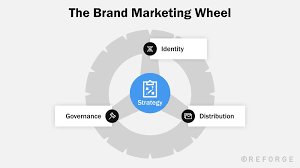The Power of Brand Strategy: Building a Strong Identity
In today’s competitive marketplace, having a strong brand strategy is essential for any business looking to stand out and connect with its target audience. A brand strategy goes beyond just a logo or a catchy slogan – it encompasses the core values, personality, and promise of your business.
Defining Your Brand Strategy
At the heart of a successful brand strategy is a clear understanding of who you are as a business and what sets you apart from your competitors. This involves defining your unique selling proposition (USP), identifying your target audience, and establishing the emotional connection you want to create with your customers.
Building Brand Awareness
Once you have defined your brand strategy, the next step is to build brand awareness. This involves consistent messaging across all channels – from your website and social media to your advertising campaigns and customer interactions. By creating a cohesive brand experience, you can ensure that your audience recognizes and remembers your brand.
Creating Brand Loyalty
A strong brand strategy not only attracts new customers but also fosters loyalty among existing ones. By delivering on your brand promise consistently and exceeding customer expectations, you can build trust and loyalty that will keep customers coming back for more.
Adapting to Change
In today’s fast-paced world, businesses must be agile and adaptable to stay relevant. Your brand strategy should be flexible enough to evolve with changing market trends and consumer preferences while staying true to your core values and identity.
The Bottom Line
Investing in a well-defined brand strategy is an investment in the long-term success of your business. By establishing a strong brand identity, building awareness, fostering loyalty, and adapting to change, you can create a powerful brand that resonates with your audience and sets you apart from the competition.
Key Insights into Brand Strategy: Exploring Types, Pillars, Elements, and Real-World Examples
- What are the four 4 types of branding strategies?
- What are the 5 pillars of brand strategy?
- What are the 7 key elements of brand strategy?
- What is a brand strategy example?
What are the four 4 types of branding strategies?
In the realm of brand strategy, there are four primary types of branding strategies that businesses often utilize to differentiate themselves in the market. The first type is product branding, where a company focuses on creating a strong identity for individual products or product lines. The second type is corporate branding, which involves building a brand image for the entire company rather than specific products. The third type is service branding, where companies emphasize the unique value and experience they provide through their services. Lastly, there is personal branding, which centers around creating a distinct brand image for individuals within the organization, such as executives or key employees. Each of these branding strategies plays a crucial role in shaping how consumers perceive and connect with a business or its offerings.
What are the 5 pillars of brand strategy?
When it comes to brand strategy, the concept of the “5 pillars” serves as a foundational framework for building a strong and cohesive brand identity. These pillars typically include brand purpose, brand positioning, brand promise, brand personality, and brand story. Each pillar plays a crucial role in shaping how a brand is perceived by its target audience and differentiates it from competitors. By carefully defining and aligning these pillars, businesses can create a compelling and authentic brand that resonates with customers and drives long-term success.
What are the 7 key elements of brand strategy?
When it comes to crafting an effective brand strategy, understanding the seven key elements is crucial for building a strong and memorable brand identity. These elements typically include brand purpose, brand positioning, brand promise, brand personality, brand story, brand associations, and brand differentiation. Each of these components plays a vital role in shaping how a brand is perceived by its target audience and how it stands out in a competitive market. By carefully considering and implementing these key elements, businesses can create a cohesive and impactful brand strategy that resonates with consumers and drives long-term success.
What is a brand strategy example?
A brand strategy example can be seen in the way Apple positions itself as a premium and innovative technology company. Apple’s brand strategy focuses on simplicity, elegance, and cutting-edge design, which is reflected in its products, marketing campaigns, and customer experience. By consistently delivering high-quality products with a focus on user experience, Apple has successfully created a strong brand identity that resonates with its target audience and sets it apart from competitors in the tech industry.

